Pull-ups, a tangible measure of physical prowess and endurance, stand as a formidable cornerstone in fitness routines across the globe. Yet, for many of us, mastering this demanding exercise feels akin to scaling a towering mountain. We’re here to transform that narrative. Immerse yourself in this article, where we unravel a carefully curated collection of exercises, each meticulously designed to elevate your pull-up performance and guide you on your journey towards unparalleled strength and enviable stamina.
The Anatomy of a Pull-up
Understanding the pull-up begins with an appreciation of the muscle groups involved. A pull-up, you see, isn’t an exercise that isolates a single muscle. Rather, it’s a compound movement, calling upon numerous muscles in a symphony of strength, thus making it a stunningly efficient and potent exercise.
Latissimus Dorsi (Lats)
The primary muscle worked during a pull-up is the latissimus dorsi, located in your back. This muscle spans the length of your spine and is responsible for shoulder extension and adduction. Pull-ups demand a great deal from your lats, making them an exceptional exercise for developing a wide, V-shaped back.
Biceps Brachii
Nestled within your upper arm, the biceps brachii come alive during pull-ups, playing a supportive yet significant role. As your body ascends, your biceps flex in response, helping hoist your body weight upwards. While they may not bask in the spotlight during a pull-up, their contribution to the movement is undeniable and substantial.
Brachialis and Brachioradialis
These muscles, located in your upper arm and forearm, respectively, assist the biceps during the pulling motion. The brachialis lies underneath the biceps brachii, and the brachioradialis is a large muscle that spans the length of your forearm. Together, they work to flex the elbow joint.
Rhomboids, Trapezius, and Other Back Muscles
Pull-ups also engage the rhomboids and trapezius muscles situated in your upper back. As you pull yourself up and squeeze your shoulder blades together, you activate these muscles. Other muscles in your back, such as the infraspinatus and teres major, also assist in this movement.
Core Muscles
Subtly yet powerfully, pull-ups also engage your core. As you maintain your body in a rigid line throughout the movement, your abdominal muscles, obliques, and lower back synergize, stabilizing your body in an impressive display of isometric contraction.
By grasping the role of these muscle groups in executing a pull-up, you can sharpen the focus of your training regimen. Concentrating on exercises that strengthen these muscle groups will enhance your pull-up prowess and foster a more balanced, powerful upper body.
Exercises to Boost Your Pull-ups
Elevating your pull-up capabilities goes beyond merely attempting more pull-ups. It necessitates targeted strength training, homing in on the specific muscles employed during the pull-up. We unveil a quintet of exercises, each targeting the latissimus dorsi, biceps, trapezius, or core muscles, poised to propel you forward in your pull-up enhancement journey.
Dead Hangs
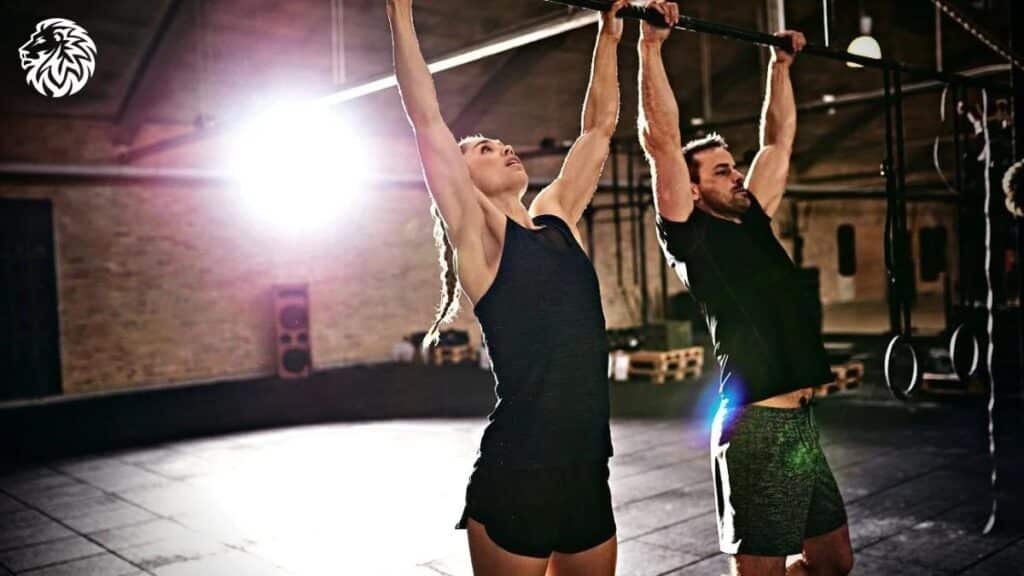
Dead hangs primarily improve your grip strength, which is fundamental for successful pull-ups. Here’s how to do them:
- Grab a pull-up bar with both hands, palms facing away from you.
- Allow your body to hang, keeping your arms and legs straight.
- Engage your shoulders to avoid them scrunching up to your ears.
- Hold this position for as long as you can.
Lat Pulldowns
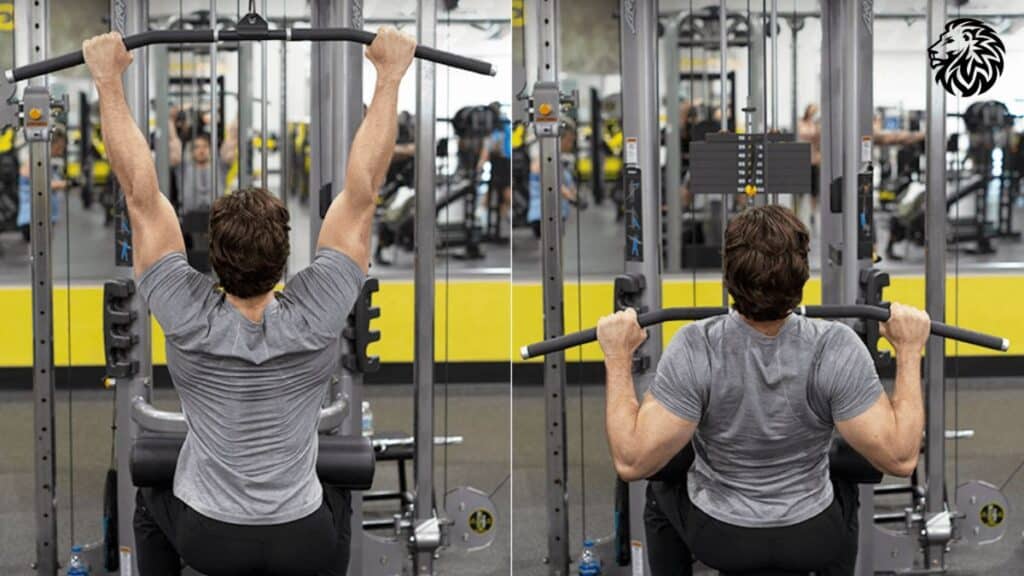
Lat pulldowns mimic the pulling motion of a pull-up, working the same muscles but with less body weight:
- Sit at a lat pulldown machine, grasp the bar with an overhand grip.
- Pull the bar down towards your chest while keeping your back straight.
- Slowly return the bar to the starting position.
- Repeat the exercise for the desired number of reps.
Negative Pull-ups
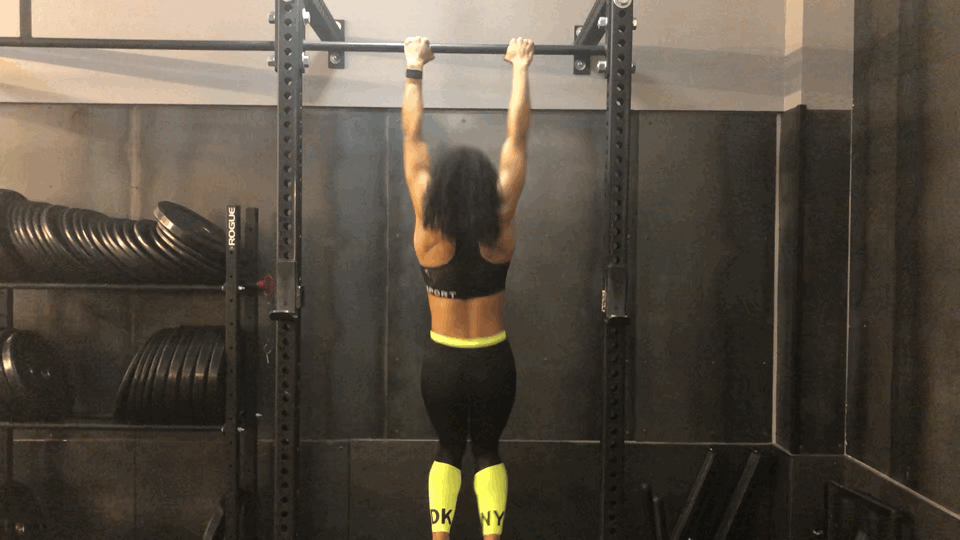
Negative pull-ups focus on the descending phase of the pull-up, which can help build strength and control:
- Use a box or bench to start at the top of the pull-up position.
- Lower your body as slowly as possible, maintaining control throughout.
- Once you’re fully extended, step back onto the box.
- Repeat the exercise for the desired number of reps.
Inverted Rows
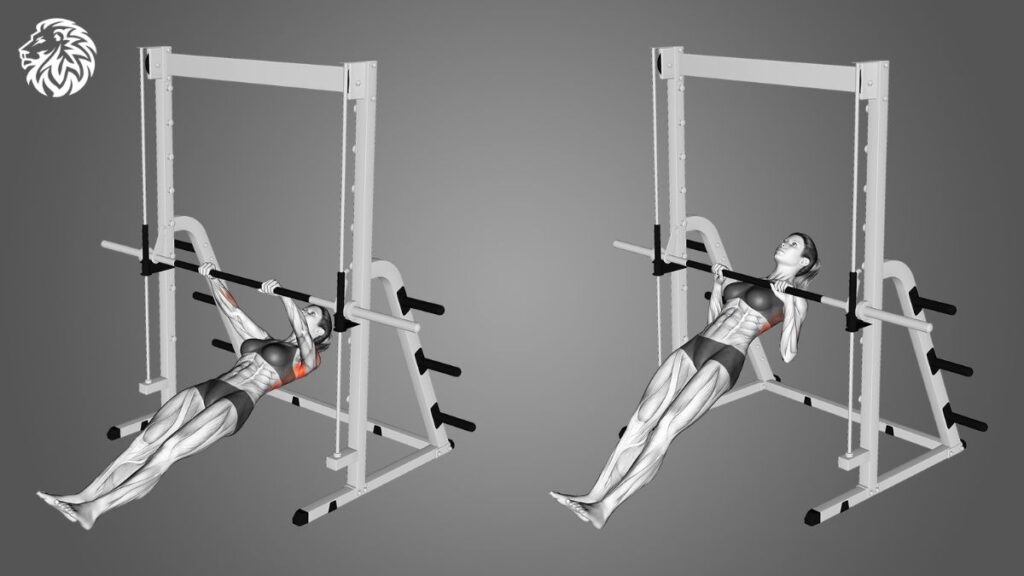
Inverted rows engage the same muscle groups as pull-ups but allow for an easier starting point:
- Set a barbell on a rack at waist height.
- Position yourself under the bar, grabbing it with an overhand grip.
- Keeping your body straight, pull your chest towards the bar.
- Lower your body back down with control.
- Repeat the exercise for the desired number of reps.
Planks
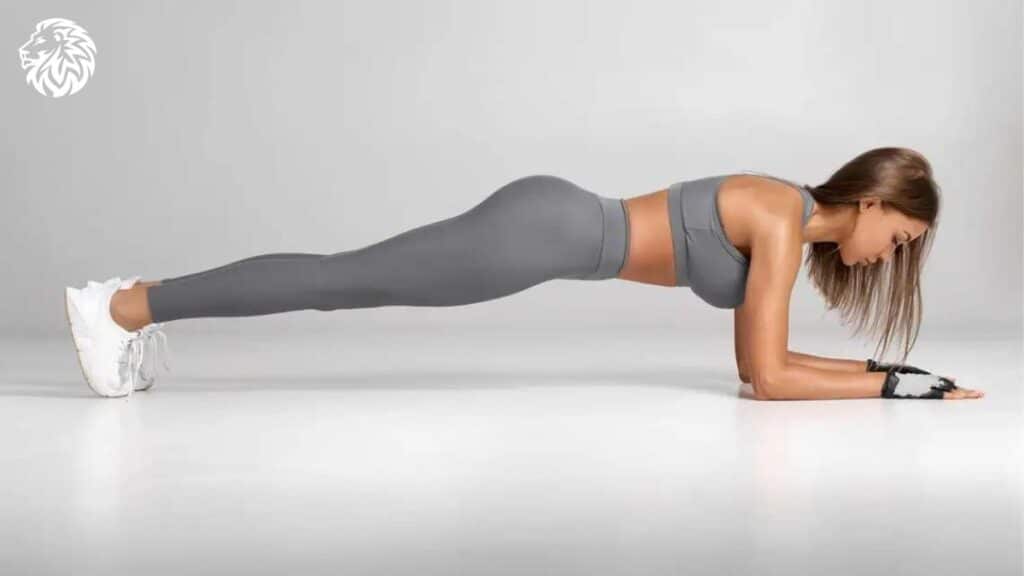
Planks strengthen your core, which is critical for maintaining proper form during pull-ups:
- Start in a high push-up position.
- Lower onto your forearms, keeping your body straight.
- Engage your core, and hold the position for as long as possible.
By incorporating these exercises into your fitness regimen, you can build the necessary strength to improve your pull-up performance. Remember, progress is incremental, and consistency is key to achieving your fitness goals.
Weekly Workout Routine to Boost Your Pull-ups
Here’s a weekly workout routine designed to enhance your pull-up performance. This routine integrates the exercises we discussed above, providing a balanced approach to target all the necessary muscle groups.
Please note: Warm up before starting your workout and cool down after finishing to prevent injury. Modify the routine as necessary to suit your fitness level, and remember to rest if you’re feeling overly fatigued.
Day 1 – Pull-up Focused Day
- Dead Hangs: 3 sets of max time
- Lat Pulldowns: 3 sets of 10-12 reps
- Negative Pull-ups: 3 sets of 6-8 reps
- Planks: 3 sets of max time
Day 2 – Rest / Active Recovery
Active recovery might involve light cardio, stretching, or yoga.
Day 3 – Strength Training Day
- Inverted Rows: 3 sets of 10-12 reps
- Bicep Curls (to strengthen biceps): 3 sets of 10-12 reps
- Overhead Dumbbell Press (to engage the trapezius): 3 sets of 10-12 reps
- Planks: 3 sets of max time
Day 4 – Rest / Active Recovery
Day 5 – Pull-up Focused Day
- Dead Hangs: 3 sets of max time
- Lat Pulldowns: 3 sets of 10-12 reps
- Negative Pull-ups: 3 sets of 6-8 reps
- Planks: 3 sets of max time
Day 6 – Strength Training Day
- Inverted Rows: 3 sets of 10-12 reps
- Bicep Curls: 3 sets of 10-12 reps
- Overhead Dumbbell Press: 3 sets of 10-12 reps
- Planks: 3 sets of max time
Day 7 – Rest / Active Recovery
This routine alternates between pull-up focused days and strength training days, ensuring that the necessary muscles get a workout without overtraining. The rest days allow your muscles to recover and rebuild, which is crucial for progress. Remember, improving at pull-ups is a gradual process, and consistency is key. Stick with it, and you’ll see improvement over time.

Conclusion
Improving your pull-up performance isn’t an overnight journey; it requires consistent effort, determination, and the correct approach. By incorporating these exercises into your routine, you’re not only setting the stage for better pull-ups but also fostering overall strength and endurance, contributing significantly to your fitness goals.
Frequently Asked Questions
How often should I perform these exercises?
Determining the ideal frequency for these exercises hinges on your existing fitness level and overarching workout regimen. A prudent starting point, however, would be integrating these exercises into your routine 2-3 times per week, ensuring you afford your body ample rest in between sessions. As your strength and stamina burgeon over time, you can incrementally amplify both the frequency and intensity of your workouts.
When will I start seeing improvements in my pull-ups?
Pull-up progress varies from person to person. Factors such as your current fitness level, the consistency of your training, diet, and rest all play significant roles in your improvement timeline. Generally, with regular and targeted training, you might start noticing improvements in your pull-up performance within a few weeks.
Can these exercises benefit me if I can’t do a single pull-up yet?
Absolutely. These exercises are designed to build up the key muscles used in pull-ups. Negative pull-ups, lat pulldowns, and inverted rows, in particular, mimic the pull-up motion and will help you gradually build the necessary strength. As you progress, you’ll find yourself getting closer to performing a full pull-up.
Are there any precautions I should take while performing these exercises?
Yes, safety should always be a priority when performing any exercise. Always ensure you’re using the correct form and controlling your movements to avoid injury. If you’re new to these exercises, you may want to consider seeking guidance from a fitness professional. Lastly, listen to your body. If an exercise causes pain or discomfort, stop and consult with a healthcare provider.
What other exercises can complement these for overall upper-body strength?
Other beneficial exercises for overall upper-body strength include push-ups, dips, bench presses, and overhead presses. Incorporating a variety of exercises into your routine can help you build balanced strength and avoid overuse injuries. However, always remember to tailor your workout routine to your personal goals and fitness level.







